Ancient Indian Art and Music Ancient Indian Art Elephant
From the Jacket
The nowadays monograph seeks to tape the place and evolution of elephant symbol in the mythology and the art of India over a menstruum of 5000 years. It is amazing every bit to how strikingly a unity in diversity in most Indian religions is displayed through this symbol. Elephant form has been used as a common denominator in the folk likewise as the religious cults only having different impact.
The broad spectrum of Indian civilization contains various colours of different intensity. Different kinds of people, races, languages, religions and traditions fabricated Indian civilization vital and colourful. The Elephant rotates with every colour of the spectrum. How the animal impressed the people through the ages is sought to be explained past the author along with all the myths and stories associated with it. As a divine member elephant was supposed to take come into beingness out of the ocean on the occasion of churning of the ocean (Samudramanthana) as Airavata the milk white elephant. On the folk level a cult developed effectually it. Jataka stories refer to elephant pillars and statues and tradition of performing Hastisutra and Hastimangala-elephant festival. Beside every bit a folk divinity it also penetrated in Buddhist and Jain mythologies.
It is the inner vitality of Indian civilization which has been the consequence of intimate connection between nature and human being inspiration. That is why, Indian religion, art and literature are rooted in the natural surroundings. Ganesa the elephant god is the best case of the oneness of nature and human being factors every bit reflected in the realm of art and literature. Ganesa is only one of the aspects of the multidimensional personality of the elephant which embodies the various hues and colours of the Indian civilization tradition.
Thus, Dr Gupta herein offers a detailed statement regarding the historical development of elephant symbol in Indian myth and art. This must be counted as a unique endeavor in understanding the symbolism of Indian culture through elephant symbol.
Nearly the Author
Dr S. K. Gupta was born in 1939 at Hapur where he received his early on education. He took his Grand. A. caste in ancient History, Archeology and Culture from the Academy of Gorakhpur in 1962 and Ph.D. degree from the University of Rajasthan on A Critical Study of Indian Art Motifs. He started his career from Banaras Hindu University where he worked for few years in the Section of Fine art and Compages every bit a Lecturer. He joined the Section of History and Indian Civilisation in the University of Rajasthan equally Assistant Professor in 1968.
Dr Gupta is a human of history with a background of science, noesis of three languages (Hindi, English and Sanskrit), practical preparation in photography, art and field work. He has visited all the important temple sites of Republic of india in general and of Rajasthan in item. At present he is working on a project-'Jain Temple Architecture of Rajasthan'.
Dr Gupta has contributed a number of research papers on different aspects of History, Art and Archaeology in various inquiry journals. His book Origins of Buddhist Art is under print. He is Banana Edition of the series History and Civilisation of India which is existence edited by Dr South. R. Goyal and is proposed to be completed in 36 volumes in Hindi language.
The present monograph seeks to record the place and evolution of elephant symbol in the mythology and the art of India over a menstruation of 5000 years. It is amazing every bit to how strikingly a unity in diversity in nigh Indian religions is displayed through this symbol. Elephant form has been used as a common denominator in the folk every bit well as the religious cults only having different import. How the animal impressed the people through the ages is sought to be explained by the au thor alongwith all the myths and stories associated with it.
Every bit a divine member he was supposed to have come into existence out of the sea on the occasion of churning of the ocean (Samudraman- thana) as Airavata, the milk-white elephant. Once accepted as born out of water it became the symbol for source of life. It symbolises the principle of maternity. It brings water from the underworld and sprinkles it on the head of Sri Laksmi, the female parent goddess, and thus became the symbol of fertility, wealth and abundance. On the folk level a cult developed effectually it. Jataka stories refer to elephant pillars and statues and tradition of performing Hastisutra and Hastimangala- elephant festival. Elephant pillars of Mauryan period might have been the reminiscences of an ancient elephant cult. In Gita information technology is listed amongst the folk divinities and as ane of the vibhutis of Krsna,
The wide spectrum of Indian culture contains various colours of different intensity. Different kinds of people, races, languages, religions and traditions fabricated Indian culture vital and colourful. The elephant rotates with every colour of the spectrum. It emerged non but as a folk divinity but also penetrated in Buddhist and Jain mythologies. Gautama, the Buddha, incarnation of mahakaruna descended in the class of a white elephant. Mothers of tirthankaras also saw the white elephant alongwith other symbols in their dream. The highest quality of an elephant is its spirit of self-sacrifice. This notion was used by Buddhists alongwith the concept of the' 'Bodhisattva'. In Buddhist faith the notion of Bodhisattva was that of a symbol of friendliness, pity, aid and sacrifice. Therefore, in Jatakas Buddha is supposed to have taken nascency in the form of an elephant in previous nascence who sacrificed himself for social welfare. How the animal impressed the Buddhists is clear from a proverb of Dhammapada where Buddha said, "It is better to live alone, in that location is no companionship with a fool. Permit a homo walk lone with few wishes like an elephant (roaming at volition) in the wood. Let him commit no sin."
It is the inner vitality of Indian civilisation which has been the result of intimate connection between nature and human inspiration. That is why, Indian organized religion, fine art and literature are rooted in the natural envi- ronment. Ganesa the elephant god is the all-time case of the oneness of nature and the human factor every bit reflected in the realm of fine art and literature. Ganesa is but ane of the aspects of the multidimensional personality of the elephant which embodies the various hues and colours of the Indian cultural tradition. He is the god of masses and is worshipped throughout the land. No traditional function begins without remembering this deity. He is the giver of success and other accomplishments: good living, prosperity and peace in life.
In Indian history elephant is also used as a symbol for majesty, power and dignity. It is interesting to know about the diverse historical allusions to elephants. The noble elephant was considered a friend of man in many ways. It was associated with great qualities rare even in men. Indian art was e'er close to religion and mythology; therefore, it used forms from nature and man. Symbols are said to exist the alpha- bet of Indian fine art.
In bringing out the present work, firstly, I would like to express my extreme gratefulness to the Honourable Prime Government minister, Shrimati Indira Gandhi who not just appreciated the idea of the monograph but very kindly spared some fourth dimension, despite her incredibly decorated schedule, and wrote a foreword to the work just before leaving for USSR on 20th of September 1982. Her dearest for and interest in promoting the report of Art and Civilisation of India are well known.
I am deeply indebted to Dr. S.R. Goyal, Head, Department of History, University of Jodhpur, Jodhpur, who despite his numerous engagements has taken pains in going through the work and made valuable suggestions. His scholarship and generous attitude have always been a source of encouragement to me. I am much obliged to dadda (5.c. Pande) for the encouragement I received through the interest he showed in my piece of work. I am also thankful to my friends and Dr. S.P. Gupta who helped me in various ways. Thanks are likewise due to the Department of Archaeological Survey of India for the permission to reproduce their photographs, to office-bearers of Library of University of Rajasthan, Archaeological Survey, and National Museum for extend- ing all cooperation and providing necessary facilities.
I am also thankful to Shri Shakti Malik, proprietor of Abhi- nav Publications for bringing out the monograph in a very short time. Lastly, I wish to brand a thankful reference to my nephew-Shri Shankar Goyal, M.A., for sending me some photographs from the Deccan College, Poona and Shri Munish Goyal, who is responsible for two line drawings used in this work.
| Foreword | five |
| Preface | vii |
| Abbreviation | 11 |
| List of Figures | thirteen |
| List of Plates | xv |
| The Nascence of Appu as White Elephant | i |
| Appu: The Flok God | ix |
| Appu: Source of Life | 17 |
| Appu:The Smashing Devotee of Visnu | 25 |
| When Appu Was Built-in as Gautama the Buddha | 29 |
| Appu as Bodhisattva | 35 |
| Appu in Buddha's Sayings | 47 |
| When Appu Was Born as Ganesa | 53 |
| Appu in History | 61 |
| References | 71 |
| Bibliography | 77 |
| Index | 85 |
| Illustrations (Plates) |
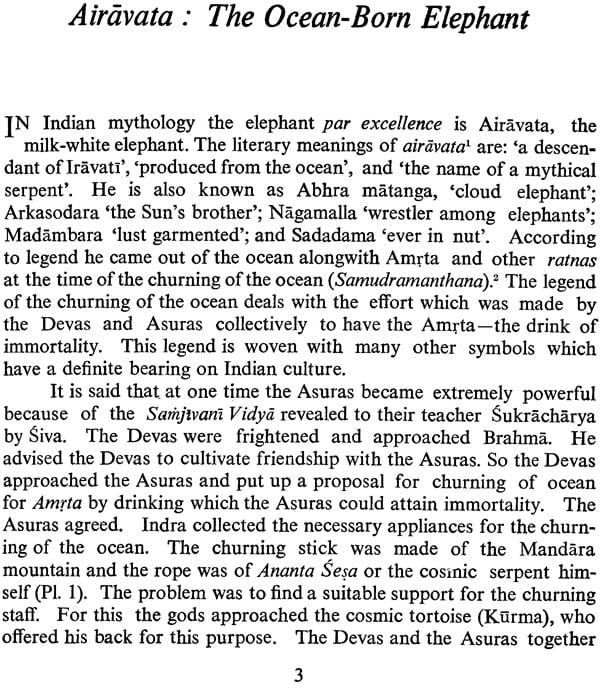
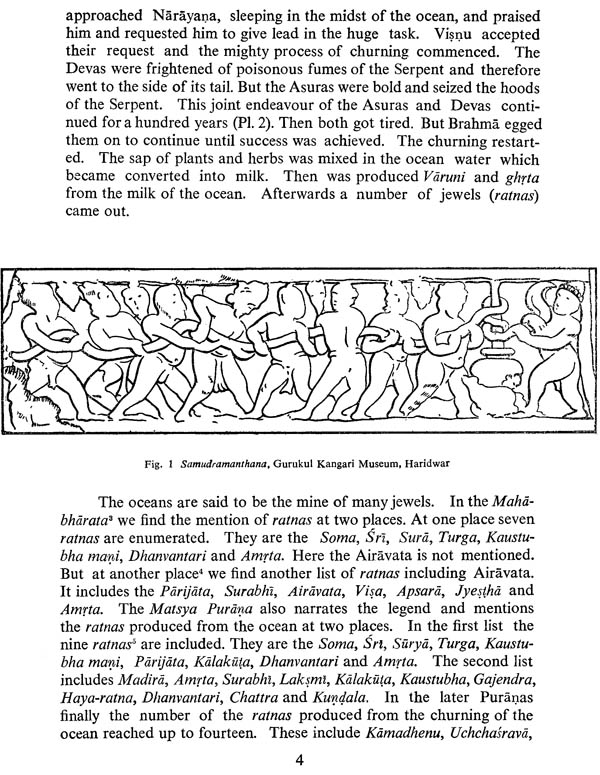
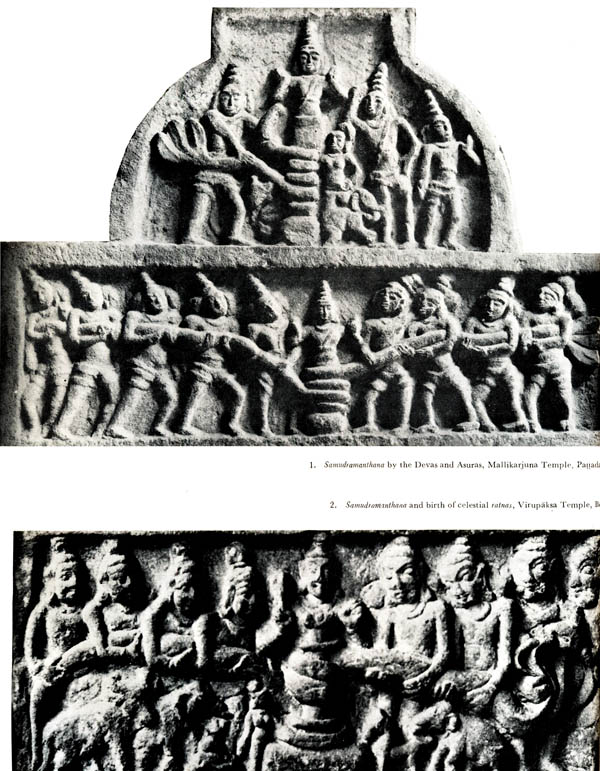
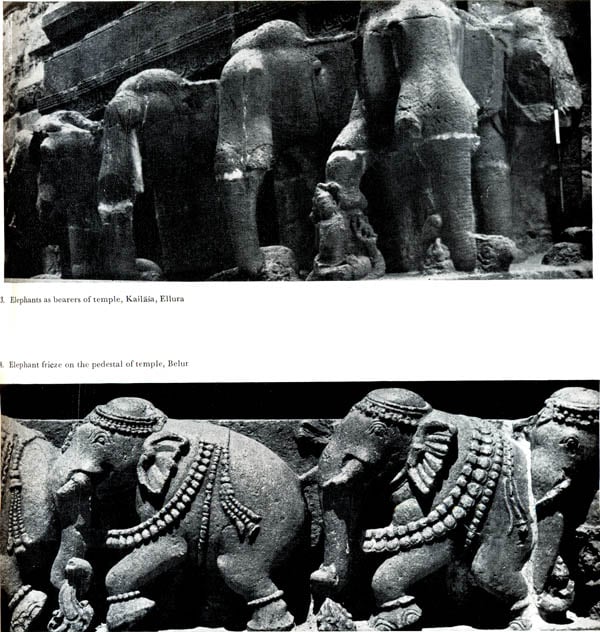
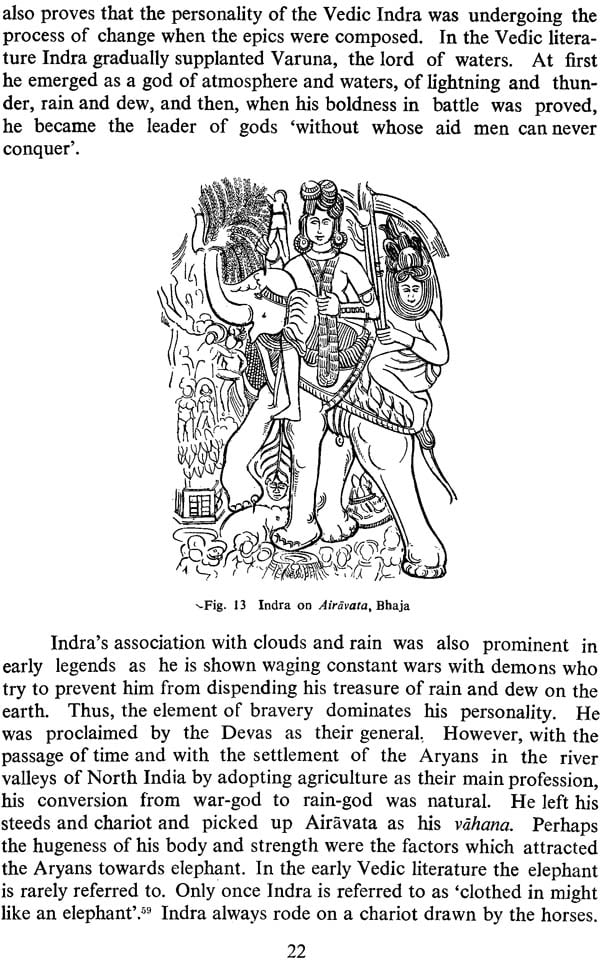
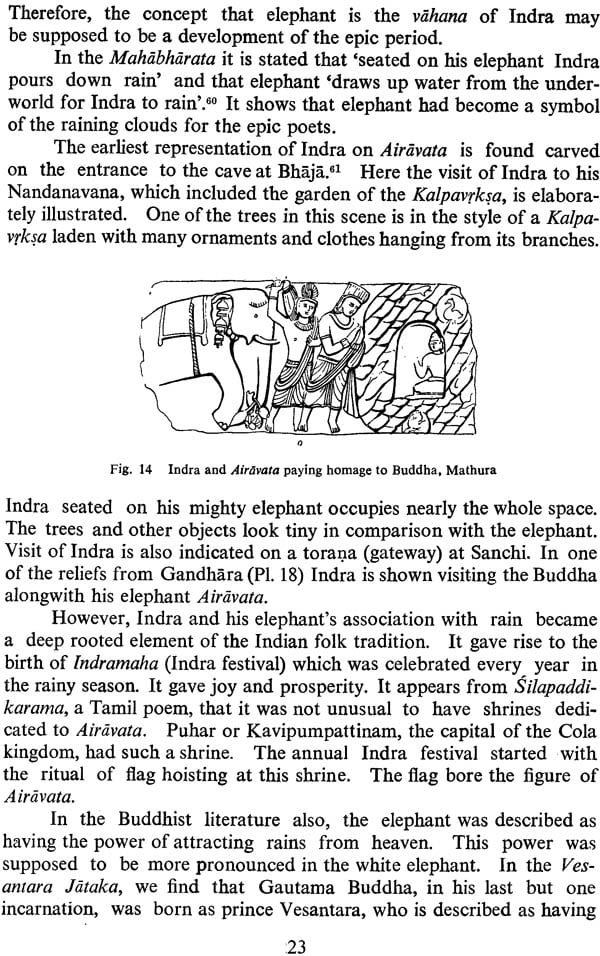
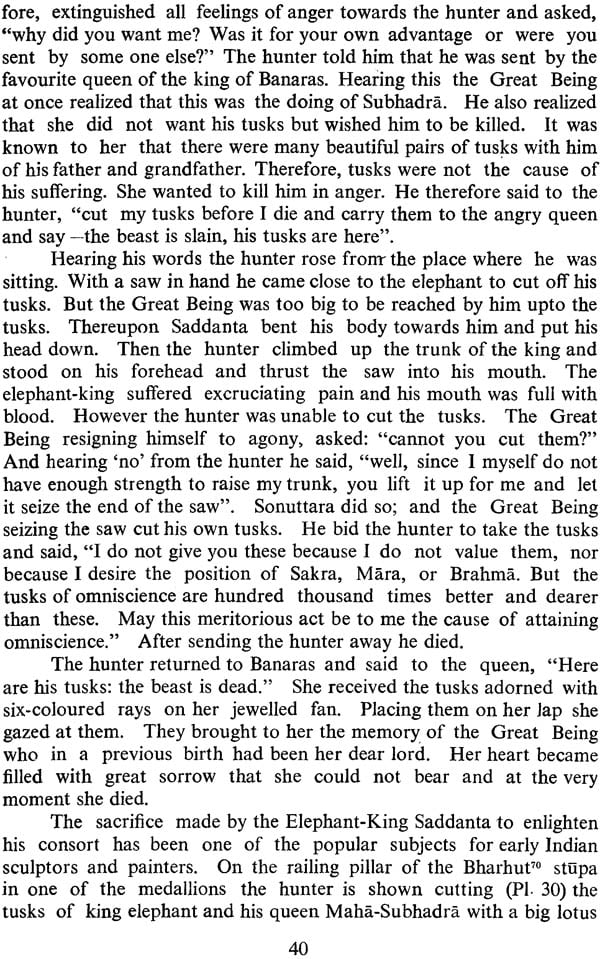
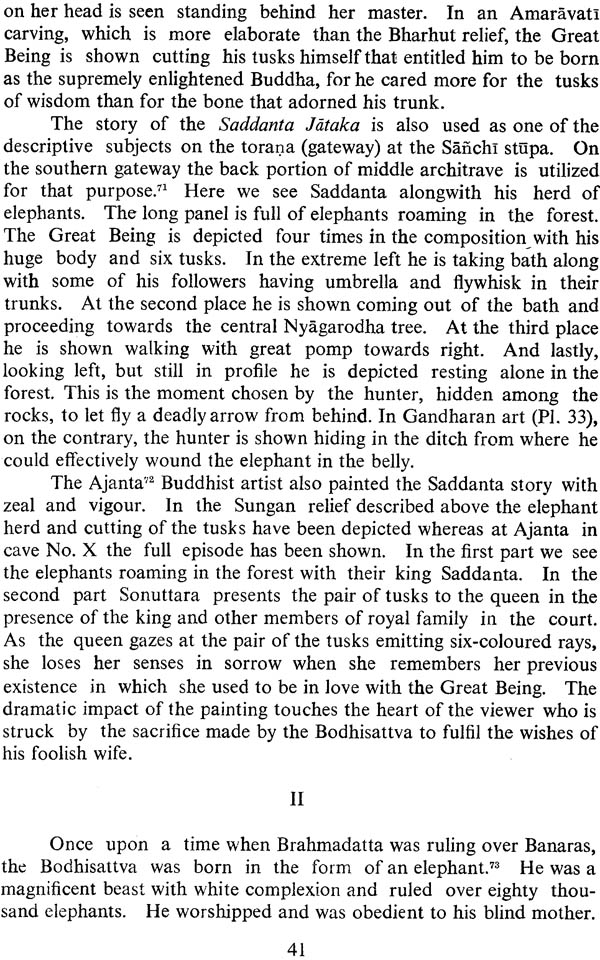
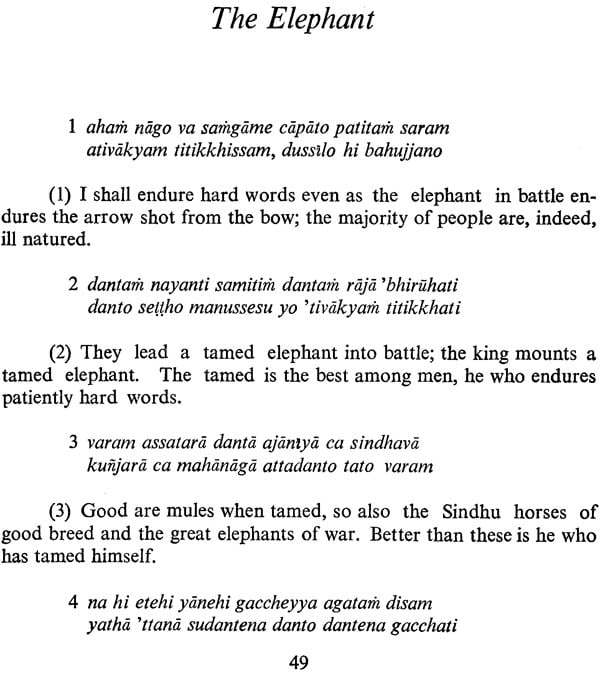
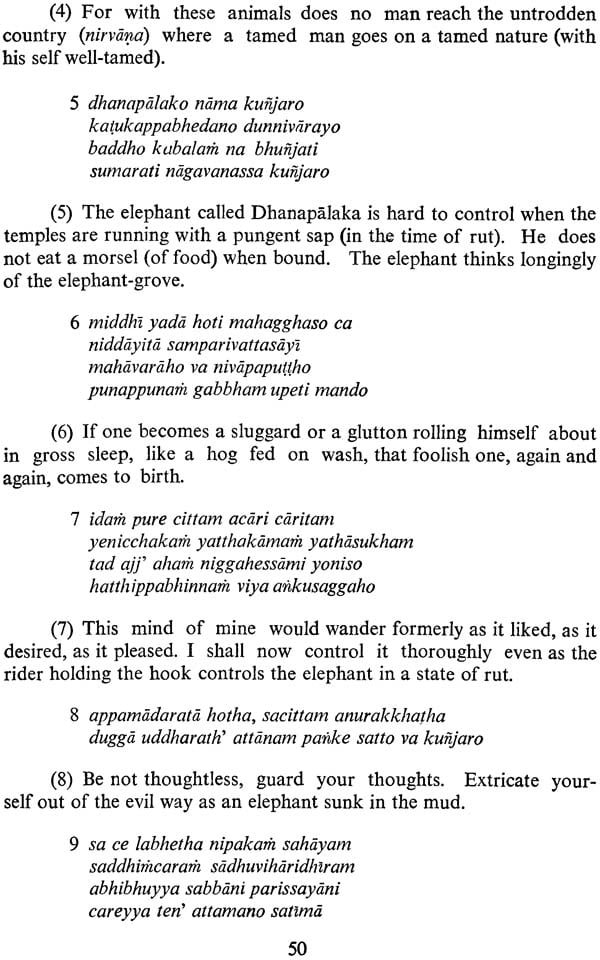
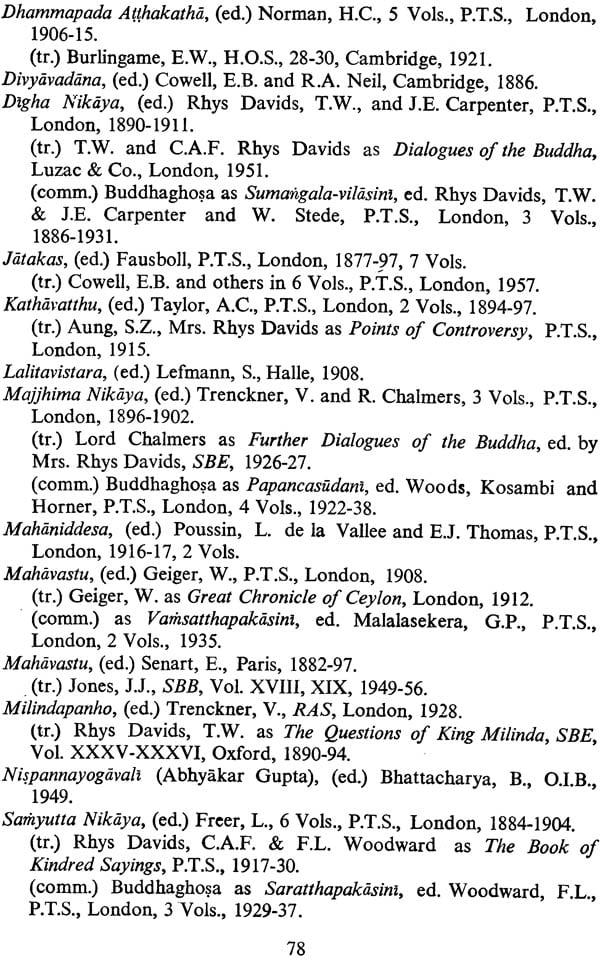
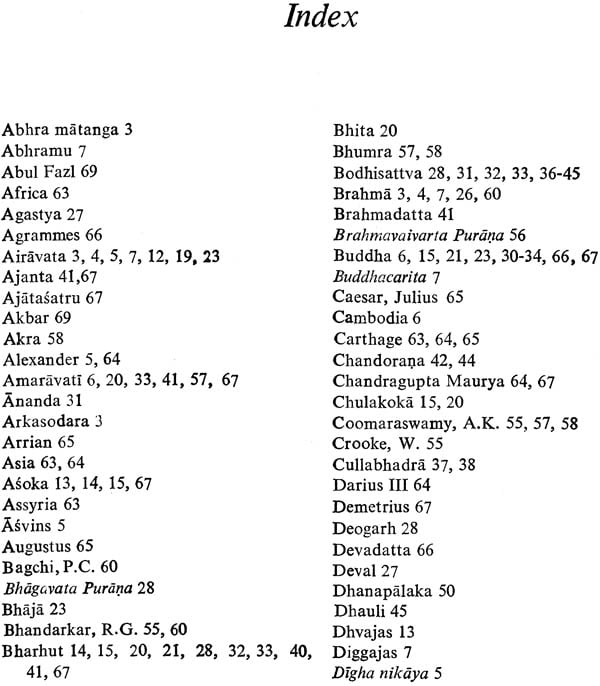
Source: https://www.exoticindiaart.com/book/details/elephant-in-indian-art-and-mythology-iml04/